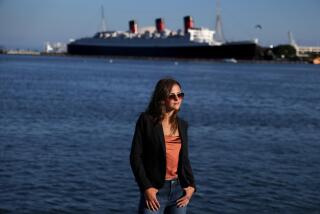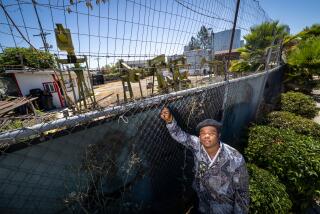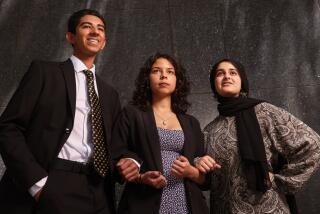Cross-County Unity Served Up at Triumphant LANCER Foes’ Party
It was an unusual alliance that lured 125 people into a hot gymnasium in South-Central Los Angeles on Saturday afternoon.
Some walked to the gym. Others came from the Westside, the San Fernando Valley and as far away as Hacienda Heights. Together they had helped the predominantly black community crush plans to erect a trash-to-energy incineration plant, which some have called a “toxic ashtray,” and they celebrated their victory in the gym, which was decorated with crepe paper and balloons.
It was an afternoon of backslapping, speeches and singing as just about everyone pledged that the unique cross-county teamwork will not evaporate. The fight, they said, will continue against those who believe the panacea to Southern California’s growing trash problem lies in more landfills and incinerators.
In fact, South-Central Los Angeles activists, who never dreamed they would become environmentalists, already have begun attending meetings to protest proposed incineration plants in far-flung places like Cucamonga and Ontario.
“We have formed a coalition,” said Sheila Cannon, one of the South-Central Los Angeles leaders who began battling the trash incinerator because she feared for the health of her asthmatic son and sister. “When they need us to come, we will come.”
The new environmental allies have delighted veteran activists. They marveled at the group’s gumption as they watched a slide show capturing snippets of past rallies and devoured a picnic supper of deviled eggs, watermelon, cold cuts and homemade cakes.
“We’re just so pleased the city is coming together to solve problems across racial lines, across economic lines,” said Laura Lake, a UCLA professor with the group Not Yet New York.
“We’re joining together and growing larger with each new battle,” said Will Baca, a co-founder of the statewide California Alliance in Defense of Residential Environments. “I think we’ve changed the direction of trash incineration so people realize it’s not possible.”
Concerned Citizens of South-Central Los Angeles was born in October, 1985, when a small group of skeptical residents began meeting every weekend at the Central Avenue branch library. The residents did not know anything about the Los Angeles City Energy Recovery project (LANCER), but they learned quickly.
‘Affected Our Water’
“After reading the first environmental impact report, I felt I was an environmentalist,” Robin Cannon said. “I saw it affected our water and land.”
From the start, Rep. Augustus F. Hawkins (D-Los Angeles) supported their efforts, but persistence failed to win many political converts, including Mayor Tom Bradley. But a year ago, reinforcements arrived. Environmentalists from the San Gabriel Valley got involved and were later joined by activists from the Westside and the San Fernando Valley.
Some environmentalists saw the LANCER project in the poor black neighborhood in terms of the domino theory. If the South-Central Los Angeles protesters failed and the incinerator was built, momentum would be there for the city to build plants proposed for the Westside and the Valley.
The city pushed for the LANCER project because its available landfill space will dry up in 1993, leaving the city nowhere to dump the 5,000 tons of garbage that residents generate daily.
But after great public pressure, Bradley cited safety concerns and abruptly reversed his position in June, a move considered to be the death knell for the trash-burning project.
Coalition members celebrated their victory by singing a revised version of “The Battle Hymn of the Republic:”
Though we recognize our landfills
Are all swelling with the waste
Still it doesn’t justify
A bad decision made in haste
Let us put our heads together
So the crisis may be faced
We’ve got to do it now!
More to Read
Sign up for Essential California
The most important California stories and recommendations in your inbox every morning.
You may occasionally receive promotional content from the Los Angeles Times.










